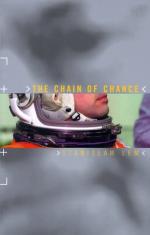|
This section contains 1,215 words (approx. 5 pages at 300 words per page) |

|
Towards the end of the 1960s, Stanislaw Lem's fiction underwent a dramatic change. Previously, he would unveil his philosophical and scientific narratives using relatively conventional characters and linear plots. Now his protagonists would undergo a transformation according to one of two variants: They would become "maximized," so that at the center of the story would be the fate of the entire humanity, or "minimized," in completely hero-less narratives in which the spotlight would go to an idea or a theory. The plots, too, would diverge on either side of conventional, becoming baroquely playful, or radically thinned out, sometimes straight into nonexistence.
The Chain of Chance, although in some ways stunningly innovative, is not as experimental as other of Lem's works from the 1970s. This short novel boasts a well defined plot, a resonant conflict, a linear structure which builds up to a cliff-hanging climax, and a...
|
This section contains 1,215 words (approx. 5 pages at 300 words per page) |

|




